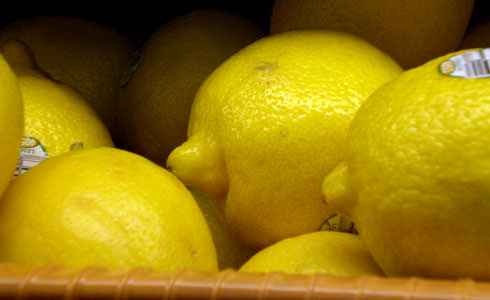

Photo by Judith Hausman
Around here, May means mesclun, mache, mushrooms, re-opened markets and mulch. We’ve made it out alive again from the produce dead zone of March, that awful limbo when the apples and potatoes have gone soft, the winter squash are gone and the dark beets are wrinkled and woody.
In April I can begin to count my blessings for the tender greens grown under an unheated hoop house, as well as for the leeks, wintered over carrots, and green cabbages at our small indoor farmers market. Then come May’s ramps, fiddleheads and shad roe—all reasons to celebrate. My restless palate turns away from the cozy dishes of winter, like braised lamb shank or minestrone, and I’m ready for the bracing and savory: salmon and asparagus, spinach strewn with bright yellow farm eggs, baby lamb or goat on the first barbecue. The CSAs begin and soon the once-beautiful old woman on my street will invite me into her rhubarb patch, and I’ll make jam for her and pie.
At this time of year, the supermarket could just make me cry: Driscoll berries are still traveling in from California and the rhubarb is from Washington State, even when its elephant ear leaves are waving in patches just around the corner. Florida citrus has overstayed its season and the vegetables look sadder and sadder, duller and duller. Bunches of mint and branches of thyme lie in hard plastic shells while the mint at home is snaking its red stems round the rocks, and the cushiony thyme is filling up every nook.
I’ve got a few solutions, though, beyond just breaking down and buying a conventional fennel, an imported red pepper and dry clementines (which I will admit, I did just the other day).
What to do, what to do?
Have patience and no whining: It’s time to be aggressive about what I’ve frozen. If I’m not careful, in fact, this year’s chard will be for sale in the farmers market before I eat last year’s. It’s time for tourte de blettes, spanikopita, white pizza or lasagna with greens or even easier, white beans, greens and potatoes: Throw those suckers into the pot. Step away from the SubZero (not) ’cause I’ve got blueberries in there and raspberries, too. I picked them myself. It’s time for frozen peaches on ice cream, frozen corn in chowder, frozen peppers in glowing-hot chili.
Head for those herbs; wait it out that way. I kept this parsley plant (pictured above) alive in my window all winter, and by Mother’s Day, I should be able to move it outside again. Maybe you’ve had even better luck. A supermarket bunch is expensive, but it goes a long way. Dill revives tired carrots, parsley perfumes potatoes, and thyme works on onions. Cilantro slaps canned beans or tomatoes around to wake them up.
Take your mouth south with some lemon rind grated into almost anything: fish, salad, and pound cake. Moroccan-style grated carrot salad reduces big horse carrots to a savory mix with lemon plus cumin and cinnamon. Try a lemon-juice-based vinaigrette for supermarket asparagus or a salad of thin-sliced early radishes, chopped mint and fresh peas or sugar snaps.
After all, it’s about principles but also about taste. When creativity wanes and we’re looking for a spark to carry us until the local bounty explodes, sustainability also means sustaining ourselves.




